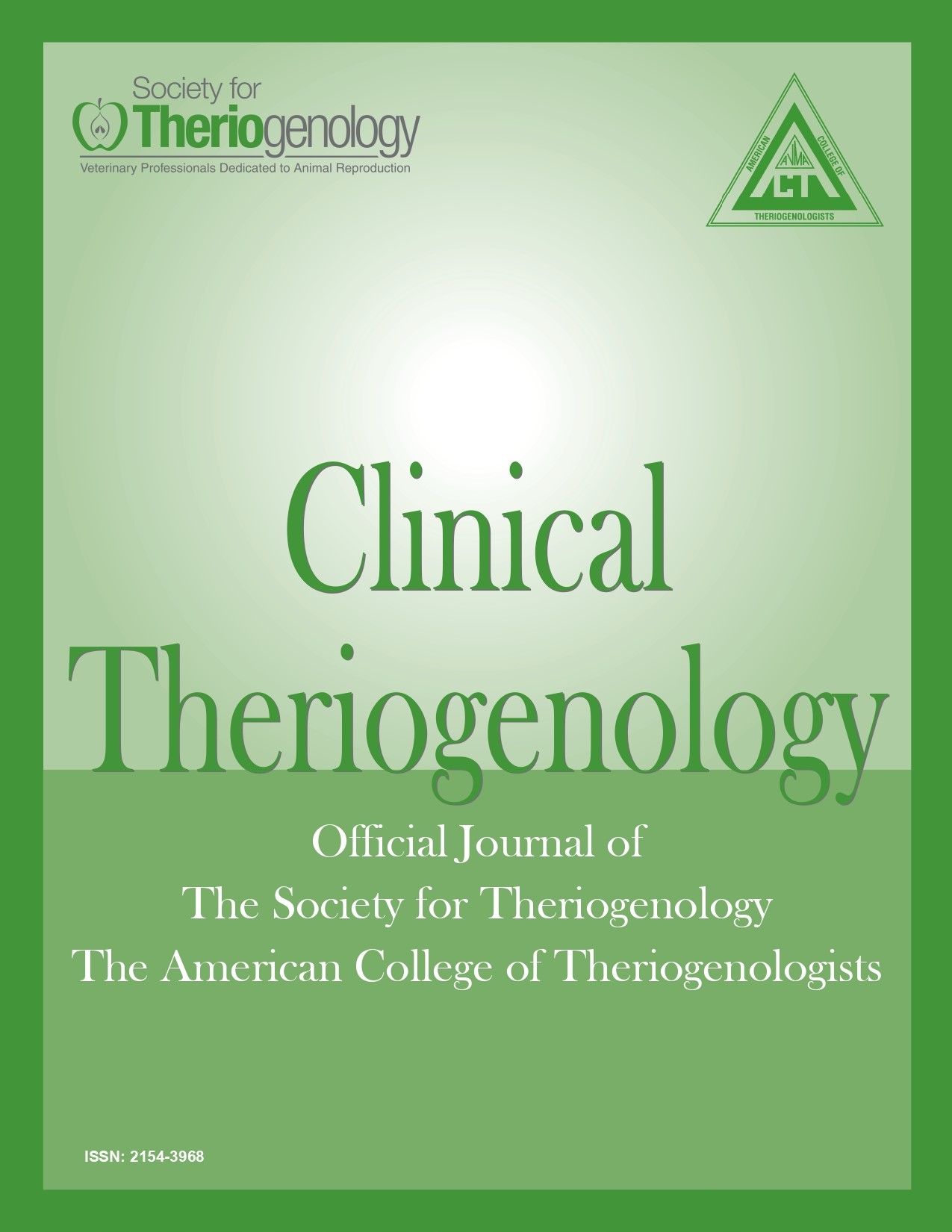Overcoming reproductive disorders in female greater one-hornedrhinoceros (Rhinocerosunicornis) to improve artificial insemination and natural breeding success
Abstract
Reproductive disorders of female greater one-horned rhinoceros (GOHR [Rhinoceros unicornis]) contribute to relatively lower (50%)
conception success from artificial insemination (AI) with frozen-thawed sperm, in comparison to rhino’s closest domestic relative, the
mare. Determining the causes of subfertility or infertility can be especially challenging in nondomestic species like rhinoceros. Formative
research identified anovulation and intraluminal uterine fluid accumulation as primary factors associated with the established 50%
conception rate from GOHR AI. We present an integrative approach taken to identify and treat female GOHR reproductive dysfunctions
to improve AI outcome to 66%. Recommended diagnostics for the GOHR practitioner include, but are not limited to, a breeding
soundness examination, transrectal ultrasonography of the reproductive tract and ovaries, and urinary hormone analysis. As similar
reproductive dysfunctions affect breeding success in their closest living domestic relative, the mare, comparable therapeutic treatment
options were explored in female GOHR. Consequently, substantial advancement in GOHR hormone therapies were used to ensure
ovulation and resolve uterine clearance issues with Sucromate® and oxytocin treatments, respectively. Managed breeding programs, like
that for the GOHR, serve a noteworthy role in the strategy to conserve threatened species. In seeking strategies to address reproductive
dysfunction in a cohort of females, we improved the procedural rate of success in AI. Reported strategies can also assist GOHR natural
breeding efforts and collectively support the long-term resilience and conservation role of this managed population.
Downloads

This work is licensed under a Creative Commons Attribution-NonCommercial 4.0 International License.
Authors retain copyright of their work, with first publication rights granted to Clinical Theriogenology. Read more about copyright and licensing here.







